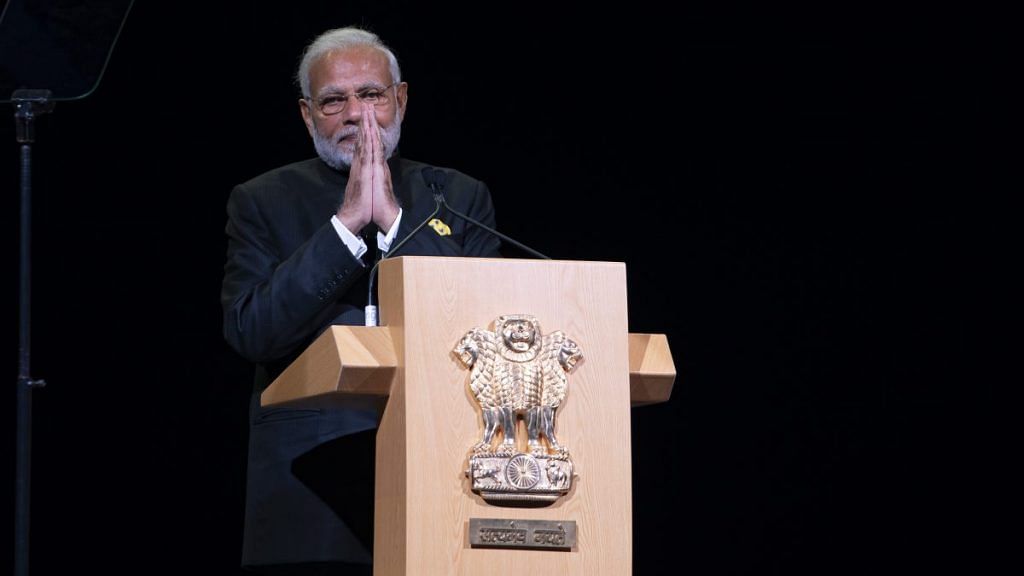This article was originally published on 19 December, 2018.
Election results in three states have now made it a real possibility that Narendra Modi may not be India’s Prime Minister after another six months. That does not mean the game is over, just that the game has finally become interesting.
Secular decline
While the BJP has been resting pretty over its brahmastra, Brand Modi, there has been an unmistakable trend of decline in its electoral fortunes since last December.
The BJP came very close to losing Gujarat, the home turf of the Prime Minister. Hailed as a great challenger, Amit Shah could not deliver a clear majority for the BJP in Karnataka. (He could not even prevent a Congress-JD(S) alliance government in the state despite having a friendly governor who tried to help.) The BJP has lost one Lok Sabha bypoll after another, critically in its strongholds such as Gorakhpur, Ajmer and Bellary. Now if you see the election results in the three states as part of this trend, there is a larger picture.
We are constantly told to see all these elections as local contests. They are not a referendum on Narendra Modi unless the BJP wins. Some decline in vote share from the 2014 Modi wave is understandable. Even Uttar Pradesh, which the BJP swept with a 2/3rd majority in 2017, saw some decline in vote share from 2014. With some exceptions like Delhi 2015, the decline was modest. This is not true for Rajasthan, where the party has lost 16 percentage points since 2014, or for Madhya Pradesh, where it has shed 13 percentage points, or Chhattisgarh, where it lost nearly 16 percentage points.
Perhaps there’s something here that surveys and reporters alike are missing. Perhaps there’s a broader disenchantment, even if it is articulated against the local party MLAs or the state chief minister.
Also read: 6 reasons why 2019 is still Narendra Modi’s to lose
‘Modi is good, but…’
Yes it’s true that voters in Madhya Pradesh, Chhattisgarh and Rajasthan said they were not voting for the central government, and that they were voting against local anti-incumbency. Election tourists such as yours truly met voters who were voting the Congress to defeat the local MLA, but said they planned to vote for “Modi” in 2019.
However, note this: people voted out Shivraj Singh Chouhan despite liking him. It is, therefore, possible that people may keep saying that they like Modi, but may still vote him out. The same happened in Uttar Pradesh too, where people said they liked Akhilesh Yadav but not his party. ‘Akhilesh is good, but…’ or ‘Shivraj is good, but…’ is the refrain that one hears in such cases. The same could happen to Modi, too. Already, Modi is down from ‘great’ to ‘ok’.
Modi’s spin doctors have often claimed his rallies make the BJP win. In seats where Modi addressed his rallies in Uttar Pradesh, we were told they caused a four per cent swing. But in these state elections, the BJP lost 70 per cent of the seats where Modi campaigned.
Also read: The defining difference between Narendra Modi & Rahul Gandhi that nobody has spoken about
Same old story
The defeat of a popular Shivraj Singh Chouhan holds another lesson for Narendra Modi. People complained of ‘fatigue’ with Shivraj. They were simply bored of him. The same speeches, the same lines, the same tropes. People wanted to see a new movie.
Succeeding in politics needs good storytelling, and Modi has been a mesmerising storyteller in the past. For a year now, Modi has been a bore. Hindutva isn’t making up for it.
Modi doesn’t have much to say other than attacking the Congress. A week after losing three states, he’s still continuing with that line of argument. He’s still saying There Is No Alternative to him, but the three states have shown TINA could develop into ITNA, to borrow journalist Sankarshan Thakur’s coinage: Is There No Alternative?
It’s the economy, stupid
2019 is still Narendra Modi’s to lose, and lose he could due to hard economic facts.
No matter how much people like Narendra Modi, his oratory and his strongman image, no matter how much they fall for his WhatsApp propaganda, if they feel a pinch in their pocket, they may desert Modi. The process would no doubt be helped by the rising index of opposition unity, with political parties across spectrum trying to put up a united fight against the BJP in every constituency.
From demonetisation to GST to a neglected banking crisis, the economy under Narendra Modi has felt a liquidity crunch. When cash doesn’t flow, and bank credit slows down, and farm produce earns a pittance, how could Modi win? Toilets and gas cylinders and housing are fine, but they appear to be poor compensation when incomes stagnate and unemployment is so bad that the government stops publishing unemployment data.
The possibility may seem unthinkable to many. Modi champions like to think that the BJP will still return with 250 seats or so. Modi critics are now hovering at the Khan Market Consensus of Below 200. But politics is not statistics. If someone told you a week ago that the TRS was going to cross 88 seats in Telangana, or the Congress was going to win 68 seats in Chhattisgarh, you would have scoffed at them.
If the BJP goes down, the Congress will naturally go up. In 2014, there were 224 seats in which the Congress stood second. UPA-1 was formed with the Congress having just 145 seats. The 11 December results have put the Congress back in a 2004-like game.
